Polarized Raman Spectroscopy of Aligned Semiconducting Single-Walled Carbon Nanotubes
Special Issues
Aligned semiconducting single-walled carbon nanotubes (s-SWCNTs) are expected to outperform silicon as the next generation of integrated circuits. Greater utilization of polarized Raman spectroscopy is proving beneficial for efficient characterization of alignment in CNT films. Here, we present the results of how polarized Raman imaging can be used to effectively characterize alignment in large regions of aligned s-SWCNT films.
Aligned semiconducting single-walled carbon nanotubes (s-SWCNTs) are expected to outperform silicon as the next generation of integrated circuits. Greater utilization of polarized Raman spectroscopy is proving beneficial for efficient characterization of alignment in carbon nanotube films. Here, we present the results of how polarized Raman imaging can be used to effectively characterize alignment in large regions of aligned s-SWCNT films.
Semiconducting single-walled carbon nanotubes (s-SWCNTs) have been a promising material over the past decade and will continue to have a significant role in high-speed and low-powered semiconductor electronics. Recently, one of the major challenges in SWCNT electronics has been overcome-hierarchical organization of the s-SWCNTs (1). Ordered films of s-SWCNTs possess exceptional electronic properties including increased hole mobility and packing density compared to nonaligned s-SWCNT films (1). Using the novel yet simple method of floating evaporative self assembly (FESA), arrays of aligned s-SWCNTs with exceptional electronic purity can be deposited as seen in Figure 1 (1). These s-SWCNTs are likely to become a better alternative to silicon in the next generation of integrated circuits.
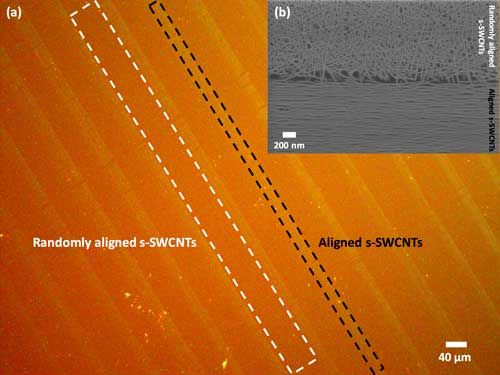
Figure 1: (a) Polarized optical image of s-SWCNT array fabricated using FESA. The white box highlights one stripe of randomly aligned s-SWCNTs shown by the darker orange color. The black box highlights one lighter colored stripe corresponding to aligned s-SWCNTs. (b) Inset shows scanning electron microscope image of randomly aligned s-SWCNTs (top) and aligned s-SWCNTs (bottom).
Raman Spectroscopy
Various techniques used to study the molecular and electronic structure of aligned s-SWCNTs include absorption spectroscopy, photoluminescence, scanning electron microscopy, and atomic force microscopy (7). With the recent advances in Raman imaging, Raman spectroscopy is now among the most efficient methods in the analysis of carbon nanomaterials. In Figure 2, a typical Raman spectrum of s-SWCNTs is shown. The presence or absence of peaks along with the peak positions and relative peak intensities provides a wealth of information about various types of carbon nanotube (CNT) materials. For instance, the position of the radial breathing mode (RBM, near 160 cm-1) allows the nanotube diameter and subsequently the chirality to be determined. The D band indicates the presence of structural defects; the intensity ratio between the D and G peaks provides a method to qualitatively compare the defect density between CNT samples. The G band distinguishes whether the CNTs are semiconducting or metallic. Furthermore, the position of the bands can be used to quantify the strain and doping in CNT films. A more comprehensive review of the theory behind Raman imaging of carbon nanotubes can be found in an article by Dresselhaus and colleagues (7).
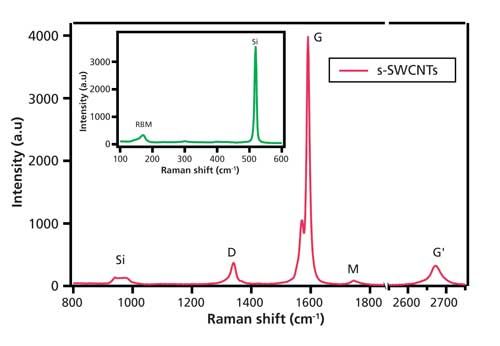
Figure 2: Raman spectrum of an s-SWCNT film with the D, G, M, and G’ bands labeled, in addition to the Si peak from the Si–SiO2 substrate. The inset shows the RBM of the s-SWCNT film along with another peak from the Si substrate.
Polarized Raman Spectroscopy
Polarized Raman spectroscopy can provide additional information to characterize the orientation and the quality of the alignment of s-SWCNT films. When the long axis of the s-SWCNT stripe is in parallel with the incident laser polarization (0°), there is a large enhancement of the Raman signal (1–6). As the sample is rotated away from this alignment, the signal decreases until it reaches a minimum at 90° (2–4). By extracting the maximum peak intensity (G-band used because of high signal-to-noise ratio) of the cosine2 fit (0°) and dividing it by the minimum peak intensity (90°), we obtain a ratio known as the optical anisotropy. For well-aligned s-SWCNT films, the optical anisotropy has a value of ≥10 (2,4). Assuming the orientational distribution of nanotubes follows a standard Gaussian distribution, this value correlates to a Gaussian distribution with a sigma (σ) of 17°, as can be seen in Figure 3 (2). Thus, from a standard Gaussian distribution, a sigma of 17° indicates that the majority of nanotubes are aligned within ±17° of one another over the film area measured (2).
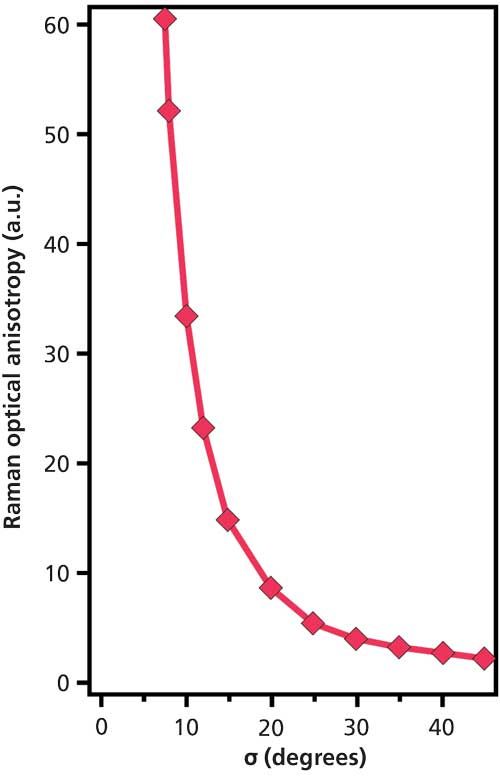
Figure 3: Raman optical anisotropy plotted as a function of sigma (2). This is based on the assumption that within the CNT arrays, the nanotube orientational distribution follows a standard Gaussian distribution (2).
The most efficient method to capture the data necessary to assess the quality of the alignment involves simply collecting two Raman images with rotating polarization optics. One Raman image with the vertically polarized incident laser and vertical analyzer orientation (V_V) aligned parallel to the SWCNT long axis. This measurement yields the strongest Raman peak intensity. The second measurement is collected with the horizontally polarized incident laser and horizontal analyzer orientation (H_H) with the alignment remaining the same (no rotation of the sample). This measurement produces the weakest Raman peak intensity. These measurements are equivalent to the 0° (V_V) and 90° (H_H) measurements mentioned previously. Thus, from the ratio of the V_V and H_H peak intensities (G-band used), we are able to calculate the aforementioned optical anisotropy and determine the quality of the alignment in the s-SWCNT films.
A secondary method to determine the alignment characteristics of the s-SWCNTs involves plotting the Raman signal intensity as a function of the angle between the Raman laser polarization and the long axis of the s-SWCNT stripes. This approach expands upon the previous method by using a rotational stage to physically rotate the sample at a set polarization while providing the polarized Raman data at various angles between 0° and 90°; additionally, it serves to confirm the direction of the orientation in the CNTs. This method, however, is a more time-consuming approach and the mechanical nature of the setup yields a lower degree of accuracy.
Methods
Carbon nanotubes were deposited on the silicon substrate via floating evaporative self-assembly (FESA) (1). For this technique, a substrate is suspended vertically in a water bath and an ink, which consists of polymer-sorted s-SWCNTs in a solution of 0.75 wt% ethanol in chloroform (prepared according to the method outlined by Joo, and colleagues [1]) is dosed at the substrate–water–air interface. The silicon substrate is uniformly withdrawn from the water at a rate of 5 mm/min. As the s-SWCNT ink evaporates, the interface between air and water also moves along the substrate via a slip-stick motion, which creates one strip of aligned s-SWCNTs (~20–50 mm) and one stripe of randomly oriented s-SWCNTs (~30–100 mm).
Raman spectroscopy measurements were made using a Thermo Scientific DXR2xi Raman Imaging microscope. The data were collected using a 532-nm laser with a 50x/0.5 BD LMPlan FI Olympus objective. The following settings were used in the Raman spectroscopy experiments: 4 mW power at the sample, a 50-µm pinhole, 300 nm to 1.0 µm image pixel size, a 90-Hz exposure time, and 4 scans per image. The sample was mounted on a rotational stage with the long axis of the CNT stripes appearing vertically.
Results and Discussion
The alignment of the s-SWCNT films was characterized using both methods mentioned above: automated control of polarization orientation and manual rotation of the sample using a rotational stage. To determine the quality of that alignment using polarization optics rotation, one polarized Raman image was collected in the V_V configuration and another in the H_H configuration. A rotational stage was used before image collection to maximize the Raman signal in the V_V configuration with the long axis of the s-SWCNT films. After the images were collected, two average areas were analyzed: an aligned stripe of s-SWCNTs and a stripe of randomly oriented s-SWCNTs. Figure 4 shows results from both of these areas. Figure 4a shows the G band (V_V and H_H polarization) of the average spectra from randomly oriented s-SWCNT areas whereas in Figure 4b it shows the average spectra from aligned s-SWCNT areas (V_V and H_H polarization). As expected, the optical anisotropy measured in the stripe containing randomly aligned s-SWCNTs is ~1, which corresponds with random alignment. The optical anisotropy measured in the stripe containing aligned s-SWCNTs is ~22, corresponding with aligned s-SWCNTs. From Figure 3 we can determine how well the s-SWCNT stripes are aligned; an optical anisotropy value of 22 corresponds to a σ of 12, thus indicating that the majority of nanotubes are aligned within ±12° of one another over the area measured. This is significantly greater than the σ of ~10 seen in literature for similarly well-aligned CNT films, thus indicating exceptional alignment in s-SWCNTs fabricated using the the FESA method.
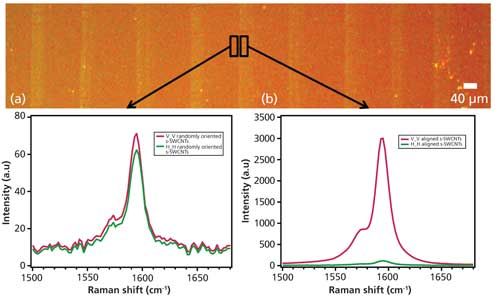
Figure 4: Polarization Raman spectrum of the G-band intensity as a function of s-SWCNT orientation and polarization orientation (V_V or H_H) using automated polarization: (a) G-band intensity of randomly oriented s-SWCNTs with V_V and H_H polarization orientations, (b) G-band intensity of aligned s-SWCNTs with V_V and H_H polarization orientations. The strong signal and high optical anisotropy (~22) indicate exceptional alignment in the s-SWCNTs.
Additionally, to further confirm and supplement data already collected, polarized Raman images were collected at 15° intervals from 0° to 90° using a rotational stage in the V_V configuration. Before collecting these images, the rotational stage was used to maximize the Raman intensity of the G-band with the long axis of the SWCNT oriented parallel to the polarization of the incident light, thus providing the signal for the 0° position. Figure 5b illustrates the change in the Raman signal intensity as the sample is rotated from 0° to 90° with respect to the polarization of the incident light. Figure 5a shows the results from an area of unaligned s-SWCNTs; Figure 5b shows an aligned area. Note the difference in scale for the intensity axis when comparing the two figures. Quantitatively, the optical anisotropy in Figure 5b can be calculated and yields a value of ~22 wheras in Figure 5a, the optical anisotropy was calculated to be ~1. An optical anisotropy of ~22, again, indicates exceptional alignment in these SWCNT films compared to those found in literature. This data further confirms that the FESA fabrication technique yields well-aligned s-SWCNT stripes.
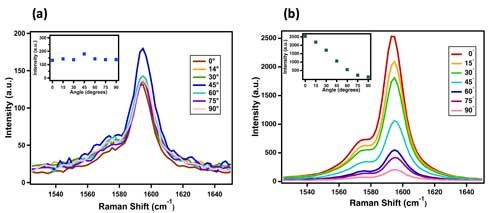
Figure 5: Polarization Raman spectrum of the G-band with angle dependence of both aligned and randomly oriented s-SWCNT areas. (a) Randomly oriented s-SWCNTs. The variation in intensity with angle is small, ranging from 125–180 a.u. This variation is due to imperfect sample positioning repeatability. (b) Aligned s-SWCNTs. The strong signal intensity indicates a high degree of alignment in the stripe of aligned s-SWCNTs.
Polarized Raman Imaging
From the polarized Raman images using the V_V and H_H orientations, we are able to produce an “orientation” image from the ratio of those Raman images. This spectroscopic image not only allows us to visualize the areas containing well aligned s-SWCNT films, but also provides a quantitative measurement of the extent of orientation in these areas.
Image contrast for the Raman chemical images shown in Figure 6 is generated by the intensity of the G-band in spectra collected at each pixel. From Figure 6a, we can infer that the red areas have the highest degree of alignment. Subsequently, the blue and black areas have the lowest degree of alignment. By collecting a second image at crossed polarization, Figure 6b, we now have enough information to calculate the alignment of the s-SWCNTs.
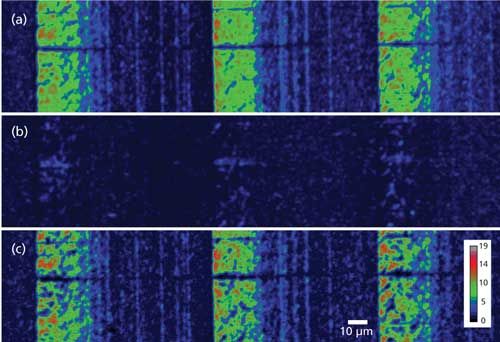
Figure 6: Polarized Raman imaging on arrays of s-SWCNTs with various polarization orientations: (a) laser polarization aligned with s-SWCNT axis (V_V), (b) laser polarization perpendicular to s-SWCNT axis (H_H), (c) orientation image produced by dividing the spectroscopic arrays from (a) and (b) polarization images. The areas of higher intensity represent areas of well aligned s-SWCNTs whereas areas of low intensity represent areas of randomly oriented s-SWCNTs.
The image contrast in Figure 6c is generated from a calculation of optical anisotropy at each pixel. Average optical anisotropy values observed were between 1.0 and 22.0 corresponding to the nonaligned and exceptionally aligned portions of the image. It indicates areas of subtle variation in alignment quality and with a careful comparison of Figures 6a and 6c, it reveals areas of exceptional alignment. This orientation image, enabled by polarized Raman imagery, provides a detailed map of the quality of SWCNT alignment, gives us a better understanding of our experimental process, and can be further used to optimize process parameters in future fabrications of aligned arrays of s-SWCNTs.
Conclusion
Polarized Raman spectroscopy is a powerful analytical tool for the analysis of molecular orientation. Here, the alignment of the s-SWCNT films fabricated via FESA was confirmed through two methods of polarized Raman: automated control of polarization orientation and manual sample rotation using a rotational stage. The high quality of the alignment was characterized by calculating the optical anisotropy, which was found to be ~22; this correlates with an exceptionally high degree of alignment. Additionally, using the polarization Raman images, an orientation image was produced which visually indicates the exact areas of alignment and quality of the alignment in those areas. With the growing research and development in fabricating aligned CNT films, polarized Raman imaging serves as a quick and informative tool to characterize alignment in them.
Supporting Information Available
Additional supporting information is available on-line at: www.spectroscopyonline.com/supplementary-information-polarized-raman-spectroscopy-aligned-semiconducting-single-walled-carbon-n.
Acknowledgment
The authors declare no competing financial interest. This work was partially supported by the National Science Foundation Graduate Research Fellowship under Grant No. DGE-1256258 (A.M. and K.J.). This work was also supported by the National Science Foundation CMMI-1462771.
Erratum
This version of this article includes a number of significant corrections to the text and to two of the figures (Figures 1 and 5) compared to the version that appeared in print in June 2016. This version should be considered the official version.
References
- Y. Joo, G. Brady, M. Arnold, and P. Gopalan, American Chemical Society30, 3460–3466 (2014).
- Q. Cao, S.J. Han, G.S. Tulevski, Y. Zhu, D.D. Lu, and W. Haensch, Nat. Nanotechnol.8, 180−186 (2013).
- X. Li, L. Zhang, X. Wang, I. Shimoyama, X. Sun, W.S. Seo, and H. Dai, J. Am. Chem. Soc.129, 4890−4891 (2007).
- J. Hwang, H. Gommans, A. Ugawa, H. Tashiro, R. Haggenmueller, K.I. Winey, J.E. Fischer, D. Tanner, and A. Rinzler, Phys. Rev. B62, R13310 (2000).
- C.L. Pint, Y.-Q. Xu, S. Moghazy, T. Cherukuri, N.T. Alvarez, E.H. Haroz, S. Mahzooni, S.K. Doorn, J. Kono, and M.Pasquali, ACS Nano4, 1131−1145 (2010).
- J. Schindelin et al., Nat. Methods9(7), 676–682, PMID 22743772 (2012).
- M.S. Dresselhaus et al., Physics Reports-Review Section of Physics Letters409, 47–99 (2005).
Amir Mashal is with Thermo Fisher Scientific and the Department of Electrical and Computer Engineering at the University of Wisconsin-Madison in Madison, Wisconsin. Dick Wieboldt is with Thermo Fisher Scientific. Katherine Jinkins and Michael S. Arnold are with the Department of Materials Science and Engineering at the University of Wisconsin-Madison. Direct correspondence to: mashal@uwalumni.com
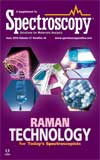
AI-Powered SERS Spectroscopy Breakthrough Boosts Safety of Medicinal Food Products
April 16th 2025A new deep learning-enhanced spectroscopic platform—SERSome—developed by researchers in China and Finland, identifies medicinal and edible homologs (MEHs) with 98% accuracy. This innovation could revolutionize safety and quality control in the growing MEH market.
New Raman Spectroscopy Method Enhances Real-Time Monitoring Across Fermentation Processes
April 15th 2025Researchers at Delft University of Technology have developed a novel method using single compound spectra to enhance the transferability and accuracy of Raman spectroscopy models for real-time fermentation monitoring.
Nanometer-Scale Studies Using Tip Enhanced Raman Spectroscopy
February 8th 2013Volker Deckert, the winner of the 2013 Charles Mann Award, is advancing the use of tip enhanced Raman spectroscopy (TERS) to push the lateral resolution of vibrational spectroscopy well below the Abbe limit, to achieve single-molecule sensitivity. Because the tip can be moved with sub-nanometer precision, structural information with unmatched spatial resolution can be achieved without the need of specific labels.